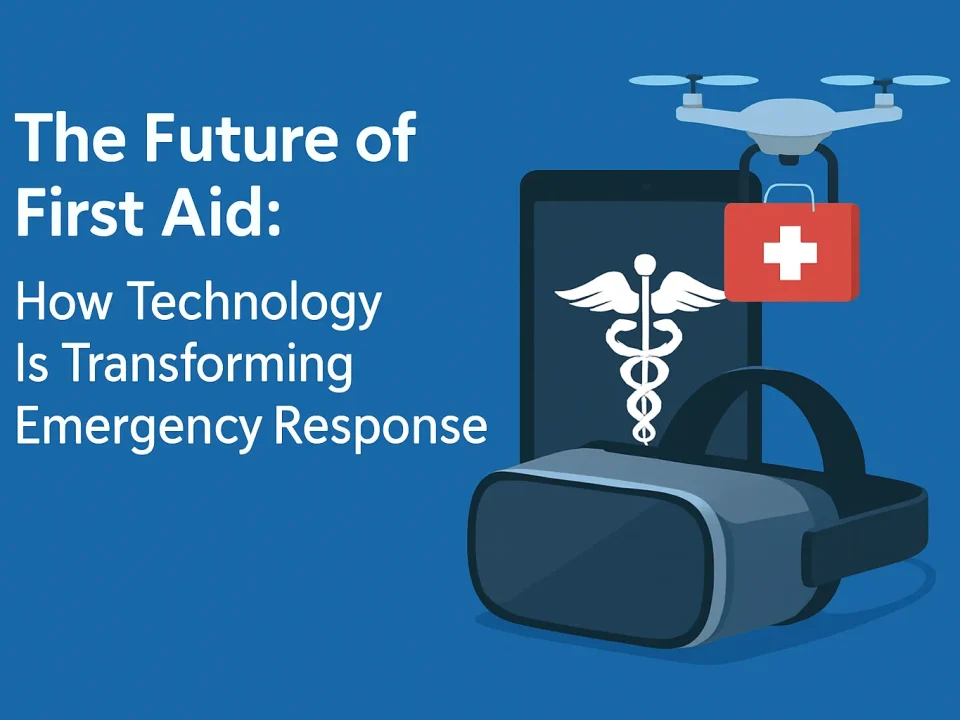How Safety Perception Survey Lay the Foundation for a Successful BBS Implementation Program

Chlorine Storage and Handling: Protecting Lives and the Environment in Indian Process Industries
October 17, 2023
HAZOP vs. What-If Analysis Study
October 18, 2023In this article, we delve into the crucial role that Safety Perception Surveys play in building a solid foundation for a successful Behavior-Based Safety (BBS) implementation program. By highlighting the problem faced by organizations when it comes to integrating BBS, we shed light on the significance of understanding employees’ safety perceptions. Be prepared to gain insights into the process of conducting these surveys, their impact on cultivating a positive safety culture, and the promising outcomes that await organizations dedicated to fostering a safer work environment. Get ready to embark on a journey of transforming safety practices and reaping the rewards of an effective BBS program.
Introduction
Ensuring workplace safety is an indispensable aspect of any organization’s operations. However, the traditional approaches to safety management often fall short in truly understanding and addressing the underlying factors affecting safety performance. This is where Safety Perception Surveys come into play – they lay the foundation for a successful Behavior-Based Safety (BBS) implementation program, revolutionizing the way organizations approach safety. In this enlightening exploration, we will delve into the intricacies of how Safety Perception Surveys can transform your organization’s safety culture and pave the way for a comprehensive BBS program. We will unravel the importance of these surveys in providing valuable insights into employees’ perceptions and attitudes towards safety, equipping organizations with actionable data to drive significant improvements
Understanding Safety Perception Surveys
Understanding Safety Perception Surveys: Safety perception surveys serve as valuable tools for organizations to assess the attitudes, beliefs, and perceptions of employees regarding safety in the workplace. These surveys aim to capture the subjective experiences and insights of individuals, providing a comprehensive understanding of the safety culture within an organization. By gaining insight into employees’ thoughts and feelings about safety, organizations can identify potential hazards, evaluate existing safety practices, and implement targeted improvements.
When conducting a safety perception survey, it is crucial to design questions that elicit honest and unbiased responses. Open-ended questions encourage participants to freely express their concerns or suggestions without restrictions. Furthermore, utilizing a combination of Likert scale questions can provide quantitative data while allowing respondents to indicate their level of agreement or disagreement with specific statements.
By understanding safety perception surveys as powerful instruments for evaluating organizational safety culture, organizations can foster a sense of trust among employees. This knowledge empowers management to proactively address concerns and make informed decisions aimed at creating safer work environments. Ultimately, embracing the insights garnered from these surveys can pave the way for a successful implementation of Behavior-Based Safety (BBS) programs that prioritize employee well-being and drive continuous improvement in workplace safety standards.
Importance of Safety Perception Surveys in BBS Implementation
Importance of Safety Perception Surveys in BBS Implementation: Safety perception surveys play a pivotal role in the successful implementation of Behavior-Based Safety (BBS) programs. These surveys serve as a foundation for understanding the subjective experiences, attitudes, and perspectives of employees regarding workplace safety. By capturing valuable insights from workers at all levels of the organization, safety perception surveys provide a holistic view of the safety culture and climate within an organization.
The significance of safety perception surveys lies in their ability to uncover hidden risks, identify potential hazards, and shed light on areas that require improvement. These surveys serve as a powerful tool to gather qualitative data about employees’ perceptions of safety management systems, training effectiveness, leadership commitment to safety, communication channels, and overall organizational commitment to maintaining a safe work environment.
Moreover, safety perception surveys foster employee engagement and empower workers to actively participate in shaping the safety culture. When employees are given an opportunity to express their concerns and suggestions through these surveys, it not only enhances their sense of ownership but also cultivates a shared responsibility for maintaining workplace safety.
Ultimately, by leveraging the insights gained from safety perception surveys, organizations can develop targeted interventions and action plans that address specific areas requiring improvement. This proactive approach not only mitigates potential risks but also creates an environment where employees feel valued and supported in their efforts towards ensuring occupational health and well-being.
Designing an Effective Safety Perception Survey
Designing an Effective Safety Perception Survey: Creating a comprehensive and well-designed safety perception survey is essential for obtaining accurate and meaningful data. The survey should aim to capture employees’ true perceptions and beliefs about safety in the workplace, providing valuable insights for the implementation of a successful Behavior-Based Safety (BBS) program.
To begin, consider including both closed-ended and open-ended questions in the survey. Closed-ended questions with multiple-choice options enable easy analysis, while open-ended questions allow employees to express their opinions freely. This combination ensures a nuanced understanding of various perspectives.
Furthermore, it is important to develop questions that cover a wide range of safety-related topics such as management commitment, communication channels, employee engagement, training programs, and the effectiveness of safety policies. By encompassing these areas comprehensively, the survey can identify strengths and weaknesses within the organization’s safety culture.
Lastly, while designing the survey’s layout and structure, ensure that it is user-friendly and easy to navigate. Use clear language that avoids jargon or technical terms to ensure that every employee can understand each question without ambiguity. A well-designed survey will encourage maximum participation from employees and yield accurate results that form a solid foundation for an effective BBS implementation program.
Remember: A carefully crafted safety perception survey not only gathers vital information but also promotes engagement among employees.
Administering the Safety Perception Survey
Administering the Safety Perception Survey – Once the safety perception survey has been designed, it is crucial to approach its administration with meticulous planning and attention to detail. The survey should be distributed to all employees within the organization, ensuring that every individual has an equal opportunity to provide their valuable feedback. This comprehensive approach not only fosters a sense of inclusivity but also allows for a broader representation of perspectives, resulting in a more accurate understanding of the safety culture.
To maximize participation and engagement, it is essential to communicate the purpose and significance of the survey in a clear and compelling manner. Utilizing various communication channels such as posters, emails, and team meetings can create anticipation and enthusiasm among employees. Emphasizing that their honest opinions will shape future safety initiatives can instill a sense of ownership and empowerment within each respondent.
Moreover, it is advisable to provide flexibility in completing the survey by offering both online and paper-based options. This caters to individuals who may have different preferences or limited access to technology. Considering employee schedules and workload demands when setting deadlines can also mitigate potential barriers for participation. By demonstrating organizational commitment towards safety excellence through these measures, employees are likely to perceive the survey as an opportunity rather than an obligation – encouraging active involvement from start to finish.
Analyzing and Interpreting Survey Results
Analyzing and Interpreting Survey Results: The arduous task of analyzing and interpreting safety perception survey results requires a meticulous approach. Each response must be carefully scrutinized to uncover valuable insights that can inform the development of an effective BBS implementation program. Through qualitative and quantitative data analysis techniques, patterns and trends start to emerge, revealing the underlying perceptions and attitudes regarding safety within the organization.
Quantitative analysis involves employing statistical methods to quantify the frequency and distribution of responses. This allows for objective comparisons across different departments or employee groups, providing a comprehensive overview of safety perceptions throughout the organization. On the other hand, qualitative analysis delves deeper into understanding the reasoning behind specific responses, capturing nuanced perspectives that cannot be easily measured by numbers alone.
From this intricate web of data interpretation, opportunities for improvement begin to crystallize. It is crucial to identify recurring themes or areas of concern that arise from employees’ feedback. By pinpointing these key issues, organizations can proactively address them through targeted interventions, fostering a culture of safety that resonates with employees at all levels. As Winston Churchill once said, “The pessimist sees difficulty in every opportunity; the optimist sees opportunity in every difficulty.” Thus, embracing a positive outlook when interpreting survey results will enable organizations to transform challenges into catalysts for growth and development towards a safer working environment.
Identifying Key Areas for Improvement
Identifying Key Areas for Improvement: Once the safety perception survey results have been analyzed and interpreted, it is essential to identify key areas for improvement in order to enhance the effectiveness of the Behavior-Based Safety (BBS) implementation program. This step involves a thorough examination of the survey findings to pinpoint specific aspects of the organization’s safety culture that require attention and necessary action.
Delving into the survey data, one might discover that there is a lack of awareness regarding certain safety procedures or a prevalent disregard for personal protective equipment (PPE) usage. By identifying these key areas, organizations can tailor their efforts towards addressing these specific challenges through targeted interventions and training programs. Furthermore, this process allows organizations to allocate resources effectively by focusing on areas where improvements will yield the greatest impact.
An optimistic approach in identifying key areas for improvement can inspire a sense of confidence among employees and management alike. Emphasizing that every challenge presents an opportunity for growth and enhancement not only promotes cooperation but also fosters a proactive mindset within the organization. Through this lens, organizations can view identified weaknesses as stepping stones towards creating a safer work environment where employees are empowered to contribute actively towards maintaining their own well-being.
Developing Action Plans Based on Survey Findings
Developing Action Plans Based on Survey Findings: After analyzing and interpreting the results of the safety perception survey, it is crucial to develop robust action plans that address the identified areas for improvement. These action plans serve as roadmaps for implementing changes and driving positive behavioral changes in the workplace. They provide a clear path forward, guiding organizations towards a safer and healthier work environment.
One key aspect of developing action plans is ensuring they are specific, measurable, achievable, relevant, and time-bound (SMART). This helps in setting realistic goals and targets that can be effectively monitored and evaluated. By breaking down the findings into actionable steps, organizations can prioritize their efforts and allocate resources accordingly.
An optimistic approach to developing action plans involves fostering a culture of collaboration and ownership among employees. Encouraging active involvement from all levels of the organization creates a sense of shared responsibility towards safety improvement. This inclusivity not only increases employee engagement but also generates innovative ideas and solutions to address identified gaps. Remember, effective action plans are not merely documents but living strategies that empower individuals to contribute meaningfully towards creating a safer work environment for everyone involved.
Communication and Collaboration in Implementing BBS
In the realm of implementing Behavior-Based Safety (BBS) programs, communication and collaboration play a paramount role in ensuring their success. Effective communication fosters a culture of transparency, where employees feel comfortable sharing safety concerns and ideas. It is crucial to establish open channels for not only top-down communication from management but also bottom-up feedback from frontline workers. By creating a supportive environment that encourages dialogue, organizations empower their workforce to actively participate in improving safety. Collaboration is the cornerstone of any successful BBS implementation program. Bringing together individuals from various departments, such as safety, operations, and human resources, promotes cross-functional collaboration to address safety challenges comprehensively. Through collaborative efforts, different perspectives are shared and diverse skill sets are harnessed to design effective solutions that resonate with all stakeholders.
The power of effective communication and collaboration lies in its ability to unlock latent potential within an organization. When employees at all levels feel valued and empowered to contribute their insights towards safety improvement initiatives, an atmosphere of collective ownership takes hold. This fosters a sense of camaraderie among team members who work together towards a common goal – creating a safer workplace for everyone involved. By embracing effective communication and nurturing collaboration throughout the BBS journey, organizations pave the way for long-lasting success in fostering a culture of safety excellence.
Monitoring and Evaluating the BBS Program’s Effectiveness
Section: Monitoring and Evaluating the BBS Program’s Effectiveness – Once a Behavior-Based Safety (BBS) program is implemented, it becomes crucial to monitor and evaluate its effectiveness. This step ensures that any shortcomings are identified promptly, and necessary adjustments are made to keep the program on track towards achieving its goals. To effectively monitor the BBS program, various methods can be employed.
One effective method is conducting regular safety observations and inspections. By actively observing employees’ behaviors and the overall work environment, organizations can gather valuable data on safety performance. These observations provide insights into whether employees are adhering to safe practices as outlined by the BBS program.
Additionally, analyzing incident reports offers another avenue for monitoring effectiveness. By examining incident trends, organizations can identify potential gaps in their safety protocols or areas that require further emphasis in training programs. This proactive approach not only helps prevent future incidents but also promotes a positive safety culture within the organization.
Remember, monitoring and evaluating is not solely about identifying weaknesses but also recognizing successes. Celebrating achievements in safety performance encourages ongoing commitment from employees and fosters a positive atmosphere of continuous improvement within the organization. It reinforces the notion that their efforts contribute to safer workplaces for all.
By consistently monitoring and evaluating the BBS program’s effectiveness through active observation, incident analysis, and acknowledging successes along the way, organizations can make informed decisions about necessary modifications or improvements. The ultimate goal is to create a workplace where every individual feels valued, empowered to prioritize safety, and motivated to contribute to a successful BBS implementation program.
Addressing Challenges and Overcoming Resistance
Addressing Challenges and Overcoming Resistance: Navigating the treacherous waters of implementing a Behavior-Based Safety (BBS) program is not without its fair share of challenges and resistance. However, it is important to realize that these hurdles are not insurmountable, but rather opportunities for growth and improvement. One common challenge is the resistance from employees who may perceive BBS as a threat to their autonomy or job security. To overcome this resistance, open lines of communication must be established where employees feel heard and their concerns addressed. Engaging them in the decision-making process can foster a sense of ownership and increase their buy-in towards the BBS program.
Another challenge lies in changing long-established habits and routines that may contribute to unsafe behaviors. This resistance can stem from a fear of change or a lack of understanding about the benefits that BBS can bring to both individual employees and the organization as a whole. By providing clear explanations about how BBS can improve safety outcomes, coupled with proper training and education, employees can be empowered to embrace change positively.
Furthermore, organizational culture plays a significant role in overcoming resistance during BBS implementation. It is essential to create an environment that encourages open dialogue about safety concerns while supporting continuous improvement. Celebrating successes and recognizing individuals who actively engage in safe behaviors can foster a positive safety culture that motivates others to follow suit.
By addressing these challenges head-on, organizations can navigate through resistance with determination and optimism, knowing that by embracing change they are creating safer working environments for their employees
Sustaining the BBS Program
Sustaining the BBS Program: As the wheels of progress turn, it becomes imperative to ensure the longevity of the Behavior-Based Safety (BBS) program. Sustaining its effectiveness requires a meticulous approach, continuous engagement, and unwavering commitment from all stakeholders. One way to achieve this is through regular reinforcement and refreshing of safety principles ingrained in the program’s foundation.
To sustain the BBS program’s impact, organizations should establish a system of reinforcement that makes safety an integral part of their culture. This involves integrating safety practices into daily operations and fostering open communication channels to address concerns promptly. By encouraging employees to actively participate in safety initiatives, organizations can cultivate a sense of ownership and accountability that fuels long-term success.
Furthermore, sustaining the BBS program necessitates ongoing evaluation and adaptation based on emerging trends and industry best practices. Conducting periodic reviews allows organizations to identify areas for improvement, seize growth opportunities, and build upon previous successes. Cultivating a learning mindset within the organization enables continuous improvement while creating a safe environment where everyone feels valued and empowered.
In conclusion, sustaining the BBS program demands unwavering dedication from all individuals involved. By embedding safety principles into organizational culture, fostering collaboration, embracing innovation through periodic evaluations, and providing ongoing support for employees’ growth and development within this framework – an invincible foundation for long-term success is built — one where workplace safety thrives alongside productivity gains, ensuring a brighter future for all.
Conclusion
In conclusion, the implementation of a safety perception survey can lay a solid foundation for a successful Behavior-Based Safety (BBS) program. By effectively gauging employees’ perceptions and attitudes towards safety, organizations can identify areas for improvement and develop targeted action plans. With open communication and collaboration, resistance can be overcome, and the BBS program can be sustained over time. Remember, the journey towards a safer workplace is ongoing, but with the right tools and strategies in place, organizations can create an environment where safety is not just a priority but embedded in every aspect of their operations. Together, let us embrace this journey towards enhanced safety culture with optimism and determination.




